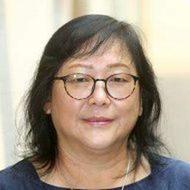Singapore's first female barrister and the cultural revolution: Her happiest moments were spent here
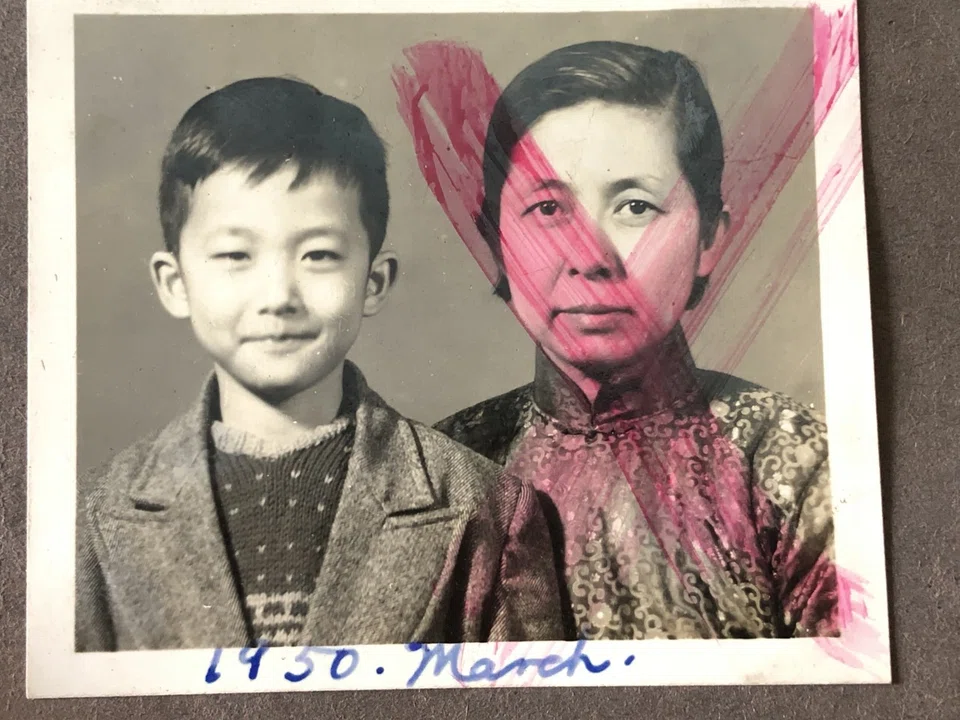
(Photos provided by Wang Lei unless otherwise stated)
A hideous red cross is marked across it, but the image is still discernible. A confident lady in a lawyer's robe and horsehair wig poses with a law book in hand. This is Teo Soon Kim (张舜琴, 1904-1978), eldest daughter of Singapore pioneer Teo Eng Hock (张永福,1872-1959).
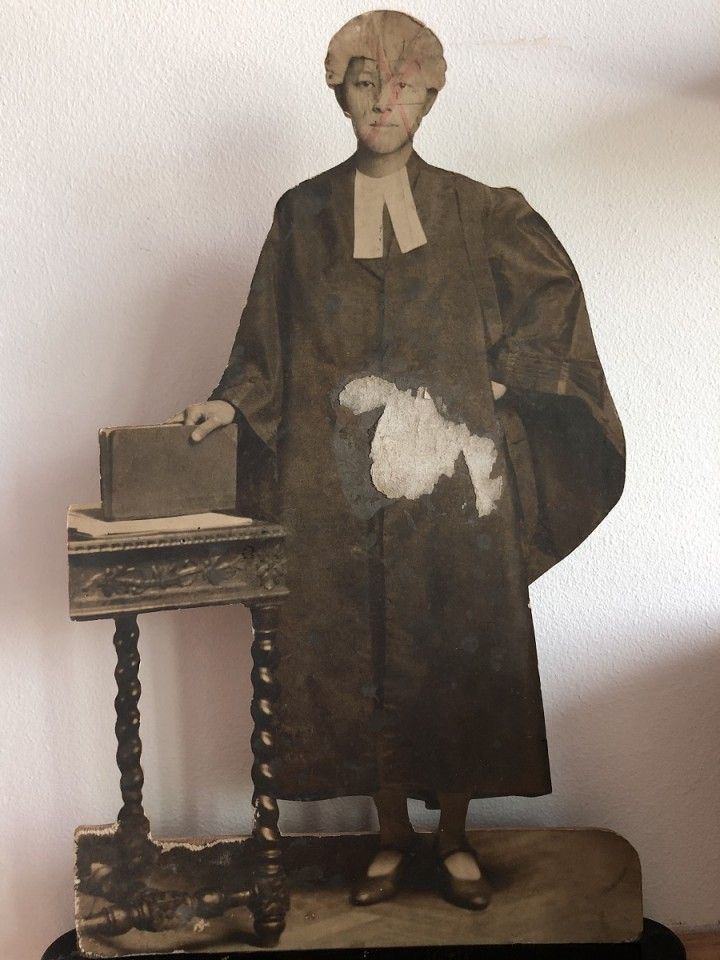
The photograph was taken when she became the first qualified female barrister in Singapore some 90 years ago. It has accompanied her throughout the turbulent wartimes and her many journeys, including her time in Taipei and Hong Kong. Her family members once brought the photo to Vancouver, but it has come back to Singapore at last, to the place where she was born.
It is serendipitous, how this precious old photograph found its way back home.
Lucy Teo, 80, and Wang Lei, 45, both great-granddaughters of Teo Eng Hock but of his different wives, met in end November 2019 for the first time under the arrangement of this reporter. They did not know each other. Both lived in Singapore but the only bond that tied them together was the story of Teo Soon Kim.
Shortly after, Wang Lei visited her mother in Anhui, bringing back various old photographs and documents of Teo Soon Kim.
The bright belle
Teo Eng Hock, former owner of the Sun Yat Sen Nanyang Memorial Hall, and great-granduncle to Singapore Senior Minister Teo Chee Hean, had supported Sun Yat-sen's revolutionary plan prior to the Xinhai Revolution, and was once the chairman of the Chinese Revolutionary League or Tongmenghui (同盟会) branch in Singapore. He had many wives and children, but was most proud of Teo Soon Kim, his outstanding daughter.
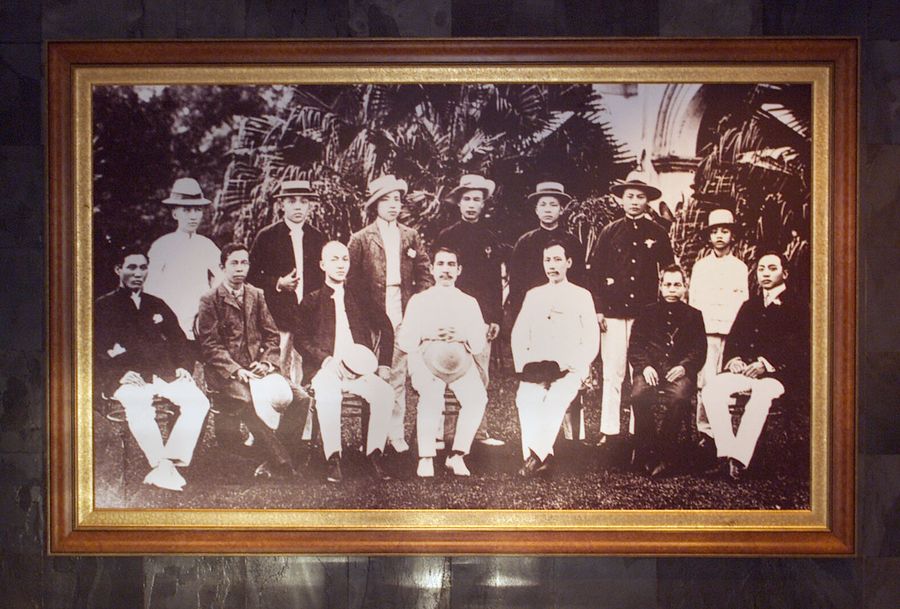
Old certificates Wang Lei brought back from Anhui showed that Teo Soon Kim had gained admission to London's Honourable Society of the Inner Temple on 28 May 1924, and became a qualified barrister on 29 June 1927.
She returned to Singapore in the second year after she graduated, accompanied by a dashing young man, Lo Long Chi. Thought of as a child prodigy, Lo Long Chi was eight years older than Teo Soon Kim. He graduated from the prestigious Tsinghua University and was also a student leader of the May Fourth Movement. He was even one of the founders of the China Democratic League (中国民主同盟). In 1921, he went to the US on a government scholarship, studying political science at the University of Wisconsin-Madison and Columbia University, before heading to the UK in pursuit of a PhD in political science. He met Teo Soon Kim there and the pair soon fell in love.
Only a spectacular wedding could match up to this match made in heaven. The pair's church wedding in December 1928 was the talk of the town. Local English newspapers covered their wedding, and even published a few wedding photographs.
Studying abroad was extremely rare then. Moreover, Teo Soon Kim had high educational qualifications and was Singapore's first female barrister. She was also the daughter of Singapore's rubber magnate - of course their wedding would grab the headlines.

After their magical wedding, Long Chi returned to China to teach at Shanghai's Kwang Hua University. He also founded the Chinese cultural and literary magazine Xin Yue (《新月》) with Chinese intellectuals such as Xu Zhimo and Hu Shih. Teo Soon Kim remained in Singapore to get a lawyer's license before joining her husband in Shanghai.
Shanghai blues
Teo Soon Kim and Lo Long Chi lived in a bungalow at Xiafei Road in Shanghai, and were neighbours with Liang Shih-chiu (梁实秋), a renowned educator, writer, translator, literary theorist and lexicographer. Their circle of friends included Hu Shih (胡适), a Chinese philosopher, essayist, and diplomat, and Xu Zhimo (徐志摩), a Chinese poet. These were all well-known names during the Republic of China era. Although Teo Soon Kim was a licensed lawyer, she did not have a good command of Mandarin and could only represent foreign clients. As a result, her business was bad and she taught English part-time at Kwang Hua University.
Alas, due to their incompatibility, their marriage crumbled shortly after they tied the knot. As recorded in the letters Lo Long Chi wrote to Hu Shih, Teo Soon Kim returned to Singapore near the end of May 1931. And based on what Teo Moh Tet (张茂迪, Teo Soon Kim's sister) penned in her memoirs, Teo Soon Kim had worked at the law firm of Song Ong Siang's (author of One Hundred Years' History of the Chinese in Singapore) for a period of time after she returned to Singapore. At that time, Teo Moh Tet was waiting for the release of her Cambridge examinations results and had accompanied her sister to court hearings and even prison visits.
According to an old local news report, in May 1932, Teo Soon Kim had successfully defended a truck driver who had killed someone while driving. Shortly after she won the case, she emigrated to China with her father who was dealing with business setbacks.
Lawyer-turned-teacher
During this reporter's interview with him in 2012, Peter Wang (Teo Soon Kim's son with her second husband Wang Zhengang) said that after emigrating to China in late 1932, Teo Soon Kim made a career switch to being a lecturer. She taught at universities in Guangzhou, Wuzhou, Shanghai and other areas. She then went to Chenggu County, Shaanxi Province, heading the Department of Foreign Languages at the Northwest Union University (predecessor of Beijing Normal University) during the Second Sino-Japanese War.

Peter Wang was born in Chenggu County in 1942. His father, who was 12 years Teo Soon Kim's junior, graduated from the Chinese department at the same university and worked as a journalist and editor in Chengdu before making a career switch to teach.
Around 1945, Teo Soon Kim brought Peter Wang, when he was just a little boy, to Taipei for a few years where she taught at the Department of Foreign Languages at the National Taiwan University. They were there when the "February 28 incident" or student uprising of 1947 broke out. There was widespread panic and Teo Soon Kim's only saving grace was her strong command of the Minnan dialect which spared her from being ostracised as a foreigner. Peter Wang recounted that his mother had the strongest command of English, and could also speak Hokkien, Teochew, and Cantonese. She even spoke Malay, but was just not proficient in Mandarin.
Defending her father
As Singapore's first female barrister, Teo Soon Kim's appearance in court was, in fact, very few. It turned out that the biggest case she ever fought was to defend her father. At the end of the Second Sino-Japanese War, Teo Eng Hock was held in custody by the Kuomintang government for joining the government of Wang Ching-wei (汪精卫), who served as the head of state for the Japanese puppet government. Teo Soon Kim specially flew back to Nanjing from Taipei to defend her father, winning the case that not only saw the release of her father, but also the return of family's properties and assets.

Shortly after winning this case, the entire family moved to Hong Kong in 1948. Teo Eng Hock lived in Kowloon City while Teo Soon Kim's family lived in Hong Kong Island. Teo Soon Kim taught English at Ying Wa College (英华书院) while her husband taught Chinese at Ta Ku Ling Ling Ying Public School (岭英中学).
Towards the end of 1952, Peter Wang's father suddenly decided to return to his family in Beijing with him. Left with no choice, in the summer of the following year, Teo Soon Kim left everything behind in search of her husband and son.
Her last visit to Singapore
Lucy Teo recalls a visit from her grandaunt (who was living in Hong Kong at that time) at their residence in Punggol in early 1953. Her great-grandfather, Teo Eng Hock, had returned from Hong Kong in the early 1950s and was living with the family at the Punggol residence. After staying at Punggol for approximately two weeks, Teo Soon Kim left for Penang to visit her sister, Teo Moh Tet. That would be the last time the Teo family ever saw Teo Soon Kim. After Teo Soon Kim returned to Hong Kong, she went to Beijing in search of her family. She never met her relatives from Singapore, Malaysia, and Hong Kong ever again, save for a meet-up with a cousin's son in Shanghai.

"Vanished into thin air"
Teo Soon Kim's life after she virtually vanished into thin air was a mystery - even Teo Moh Tet, the sister whom she grew up with, knew nothing about her life when we interviewed her in 2011.

Peter Wang said that while they were living in Beijing, his father was teaching at a secondary school while his mother's first assignment was to work at the Overseas Community Affairs Council. Following which, she went on to teach at Xingtai, Hebei, before relocating to Hefei in 1958. His mother first started teaching foreign languages at Hefei Normal University (合肥师范学院), which was also the university he studied at.
Detained thrice in a "cow pen"
Peter Wang shared that during the Cultural Revolution (between 1966 and 1976), his mother was detained three times in the "cow pen" (牛棚). Prison cells then were known as cow pens as the detainees were called "cow demons and snake spirits" (牛鬼蛇神). Teo Soon Kim originally had an invaluable collection of important documents, including approximately 30 letters that Sun Yat-sen wrote to Teo Eng Hock. Most of these documents were lost during the Cultural Revolution, and what's left are just a few old photographs that have been vandalised with large red crosses.
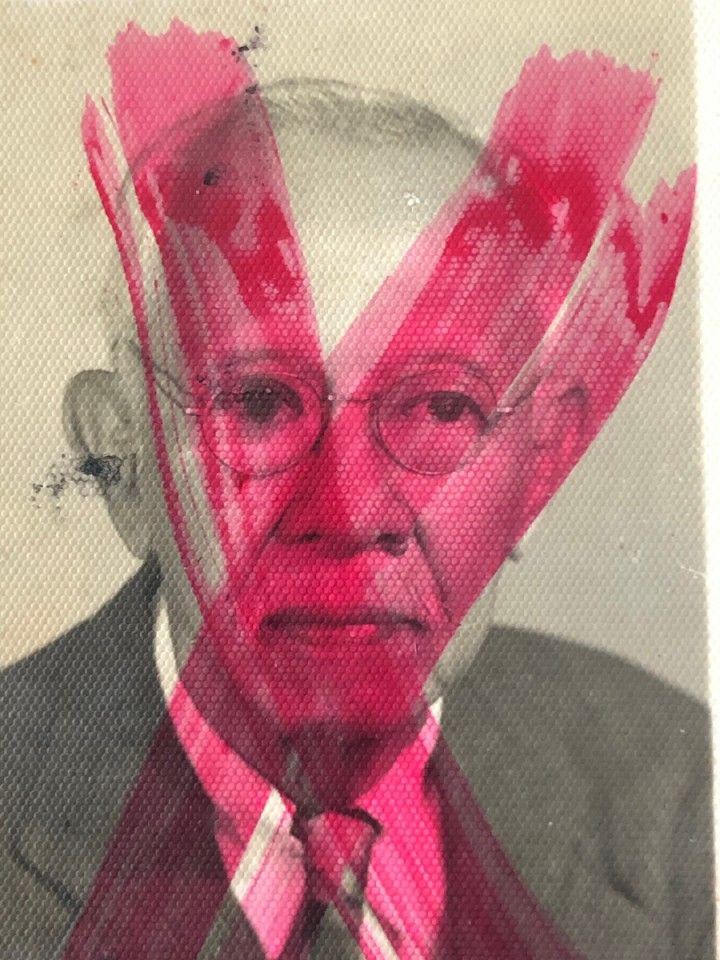
Quiet golden years
Teo Soon Kim passed away suddenly on 23rd April 1978 in the staff quarters of the Anhui University in Hefei. Only Wang Zhengang and Wang Lei (who was four years old at the time) were present in her staff quarters that was only 15sqm in size. Peter Wang and his wife Lin Xing were teaching at Huaibei and Southern Anhui respectively, and were thus unable to be by her side. Her older granddaughter, Wang Lin was also not there when she passed on.
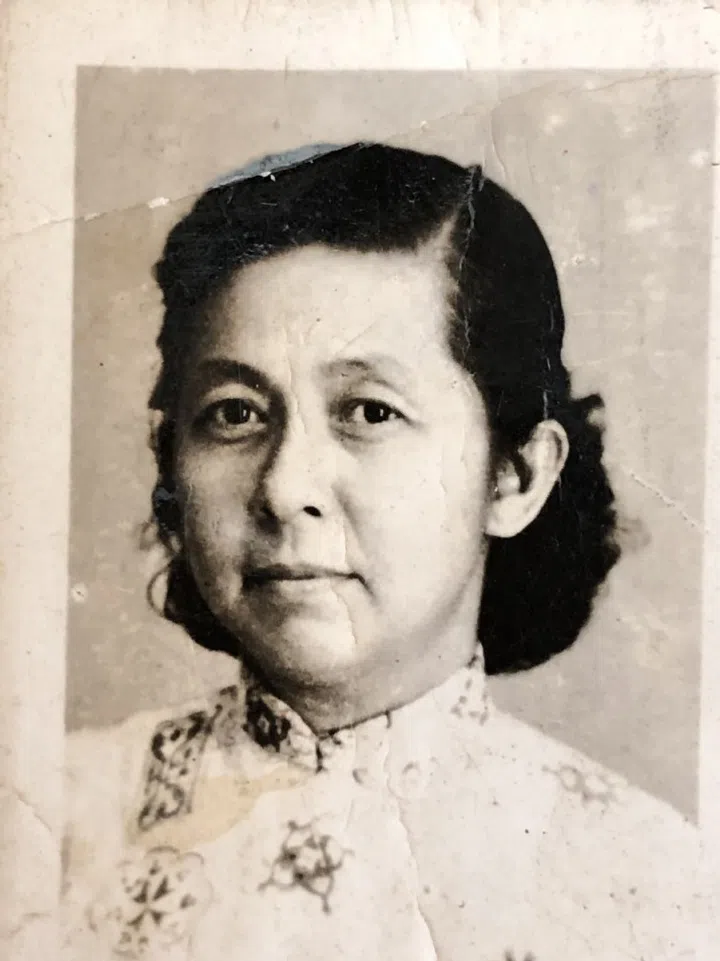
Peter Wang told this reporter that when he rushed home to attend his mother's funeral, he vaguely recalled that Teo Soon Kim possibly passed away from a sudden cardiovascular disease in her sleep; he was not aware of her actual cause of death. A day prior to her death, Teo Soon Kim was still working as Anhui University's foreign languages lecturer.
In 2011, Peter Wang got to know from Lianhe Zaobao that his aunt, Teo Moh Tet, was in Australia. Before he could even fly to Australia to visit his old aunt, Teo Moh Tet passed away. Peter Wang died in Singapore in June 2016. He was 74.
Final resting place
In 2010, a year before the 100th anniversary of the Xinhai Revolution, Wang Lei, granddaughter of Teo Soon Kim, brought home the ashes of her grandmother and laid it to rest in the Garden of Remembrance, a Christian Columbarium at Choa Chu Kang. Together with her ashes, Wang Lei also brought back pieces of Teo Soon Kim's forgotten past. Wang Lei believed that the most appropriate final resting place for her grandmother was Singapore, where she was remembered as the country's first female lawyer. While it was brief, Teo Soon Kim had spent her happiest moments here.
